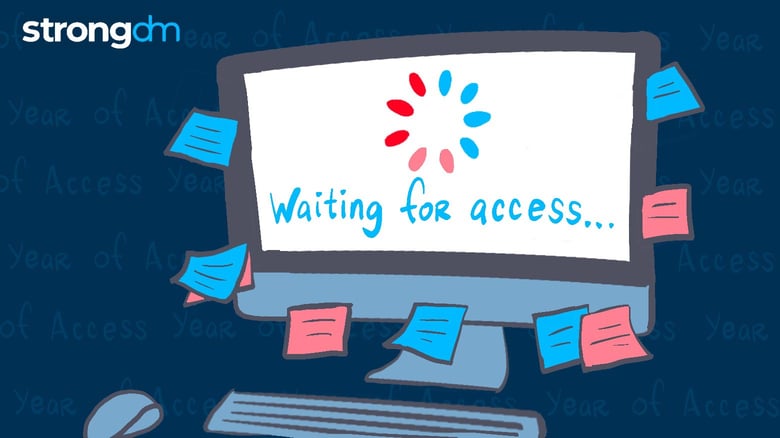

Written by
Maile McCarthyLast updated on:
May 12, 2022Reading time:
Contents
Built for Security. Loved by Devs.
- Free Trial — No Credit Card Needed
- Full Access to All Features
- Trusted by the Fortune 100, early startups, and everyone in between
In DevOps environments, fast and steady wins the race. So when developers struggle to gain timely access to the systems they need, it’s clear that something isn’t working. And these challenges extend beyond DevOps to include users in both technical (e.g. data science, engineering) and non-technical roles (e.g. HR, finance). Old-school access policies make it harder for users of all types to connect to the databases and other infrastructure they require to do their jobs.
Waiting For Access
Stop me if you’ve heard this one. Q: How many requests does it take to gain access to critical systems? A: Far too many.*
The combination of legacy approaches, cloud services, and rapidly-growing businesses that contribute to modern computing environments is making it harder and harder to grant users the access they need when they need it. In fact, in our recent survey, 88% of respondents said two or more employees are involved in approving and granting an access request. More than one in five organizations require four or more people to be involved.
And, no surprise–jumping through all those hoops takes time. At 50% of organizations, the average access request takes hours, days, or weeks to fulfill. If one of the main tenets of DevOps is agility, then it’s clear these workflows are fundamentally broken.
Those Workarounds Aren’t Working
Broken workflows motivate admins and users to find access workarounds such as over- and underprovisioning, password sharing, and using static credentials. And while unsanctioned attempts to sidestep old-school security measures may ease bottlenecks and speed up production, they often lead to real-world consequences.
This article is quite eye-opening. It presents a typical day at a hospital, with healthcare professionals sharing logins, taping passwords to their devices, and even requiring “the most junior person on a medical team … to keep pressing the space bar on everyone’s keyboard to prevent [session] timeouts.” But you can’t fault the users. Although their behaviors can put patients at serious risk, so do the outdated protocols the doctors and nurses are trying to circumvent.
Outside of the healthcare industry, problems are just as prevalent. In our recent survey, 42% percent of DevOps professionals report the use of shared SSH keys, and 65% manage infrastructure access with team or shared logins.
Old Methods Don’t Scale and Are Non-compliant
Sluggish access is more than an inconvenience. The workarounds people take to ease friction can lead to security gaps and compliance problems, plus a lot of pain for users and admins alike.
Spreadsheets and sticky notes may work well enough in the early days of an organization, but these methods certainly don’t scale. And they make implementing new security initiatives, such as Zero Trust, nearly impossible.
Furthermore, stopgap measures such as credential sharing make evidence gathering for compliance extremely difficult, as nobody really knows who has access or who was in your systems at any given time. Keeping a trail of who-did-what-when is essential to modern access control. Failing to do so may explicitly violate regulatory requirements, and even when they don’t, observability is just good security hygiene.
Want to learn more about how your peers are managing access to their infrastructure? Check out the full report, 2022: The Year of Access. Then schedule a free demo of StrongDM to see how you can upgrade your access management today.
Next Steps
StrongDM unifies access management across databases, servers, clusters, and more—for IT, security, and DevOps teams.
- Learn how StrongDM works
- Book a personalized demo
- Start your free StrongDM trial

Categories:

About the Author
Maile McCarthy, Contributing Writer and Illustrator, has a passion for helping people bring their ideas to life through web and book illustration, writing, and animation. In recent years, her work has focused on researching the context and differentiation of technical products and relaying that understanding through appealing and vibrant language and images. She holds a B.A. in Philosophy from the University of California, Berkeley. To contact Maile, visit her on LinkedIn.
You May Also Like




